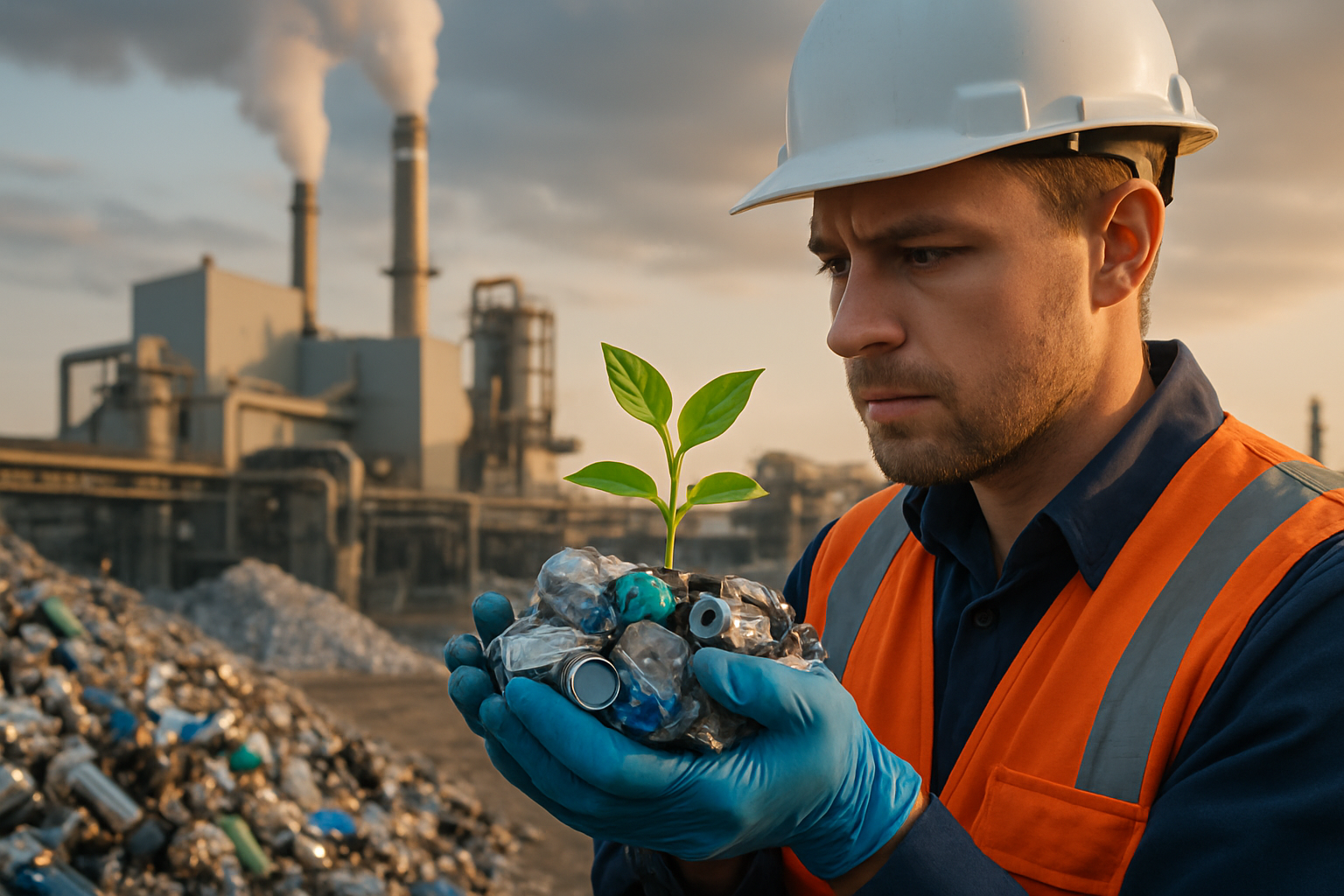Symbiotic Partnerships: Accelerating Innovation in Traditional Industries
Industrial symbiosis, a concept rooted in ecological principles, is revolutionizing traditional industries by fostering collaborative partnerships that drive innovation, reduce waste, and enhance operational efficiency. This strategic approach to resource management and collaboration is transforming how established sectors approach sustainability, competitiveness, and growth in an increasingly interconnected business landscape.

The Foundations of Industrial Symbiosis
Industrial symbiosis is built on the principle of mutual benefit through resource sharing and waste reduction. In this model, companies from different sectors form partnerships to exchange materials, energy, water, and by-products. What one company considers waste becomes a valuable resource for another, creating a closed-loop system that minimizes environmental impact and maximizes resource efficiency.
The concept draws inspiration from natural ecosystems, where different organisms coexist and benefit from each other’s presence. In the industrial context, this translates to businesses finding innovative ways to utilize each other’s outputs, reducing waste and creating new value streams in the process.
Transforming Traditional Industries
Traditional industries, often perceived as slow to change, are finding new life through industrial symbiosis. Sectors such as manufacturing, agriculture, and heavy industry are at the forefront of this transformation. By forming strategic partnerships, these industries are not only improving their environmental footprint but also discovering new avenues for growth and innovation.
For instance, a steel manufacturing plant might partner with a cement factory to repurpose its slag, a byproduct of steel production, as a raw material for cement. This partnership not only reduces waste for the steel plant but also provides a cost-effective input for the cement manufacturer, creating a win-win situation for both parties.
Economic and Environmental Benefits
The economic benefits of industrial symbiosis are substantial. Companies can significantly reduce their raw material and waste management costs by finding symbiotic partners. Moreover, the creation of new revenue streams from previously discarded materials can boost profitability and open up new market opportunities.
From an environmental perspective, the impact is equally significant. By reducing waste and optimizing resource use, industrial symbiosis contributes to lower greenhouse gas emissions, reduced landfill usage, and conservation of natural resources. This aligns with growing consumer demand for sustainable products and helps companies meet increasingly stringent environmental regulations.
Challenges and Considerations
While the potential of industrial symbiosis is vast, implementing such partnerships is not without challenges. One of the primary hurdles is the need for trust and open communication between potential partners. Companies must be willing to share information about their processes and waste streams, which can be sensitive in competitive industries.
Additionally, there may be technical challenges in adapting processes to utilize new inputs or in transporting materials between facilities. Regulatory barriers can also complicate the exchange of certain materials, particularly in heavily regulated industries.
Future Outlook and Opportunities
As awareness of industrial symbiosis grows, so do the opportunities for innovation and collaboration. Emerging technologies, such as artificial intelligence and blockchain, are expected to play a crucial role in facilitating these partnerships. AI can help identify potential symbiotic relationships by analyzing large datasets of industrial processes and waste streams, while blockchain technology can ensure transparent and secure transactions between partners.
The future of industrial symbiosis also lies in the development of eco-industrial parks, where multiple businesses co-locate to maximize resource sharing and minimize waste. These parks represent a more formalized and systematic approach to industrial symbiosis, creating hubs of sustainable industrial activity.
Strategies for Implementing Industrial Symbiosis
• Conduct a comprehensive audit of your company’s waste streams and resource needs
• Engage with local industry associations to identify potential symbiotic partners
• Invest in flexible manufacturing processes that can adapt to varying input materials
• Develop clear communication channels and trust-building mechanisms with partners
• Consider co-location opportunities with complementary industries
• Explore innovative technologies for waste valorization and resource recovery
In conclusion, industrial symbiosis represents a paradigm shift in how traditional industries approach resource management and collaboration. By fostering partnerships that turn waste into valuable resources, companies can simultaneously boost their economic performance and environmental sustainability. As this concept continues to evolve, it promises to play a crucial role in shaping a more circular and resilient industrial ecosystem for the future.





